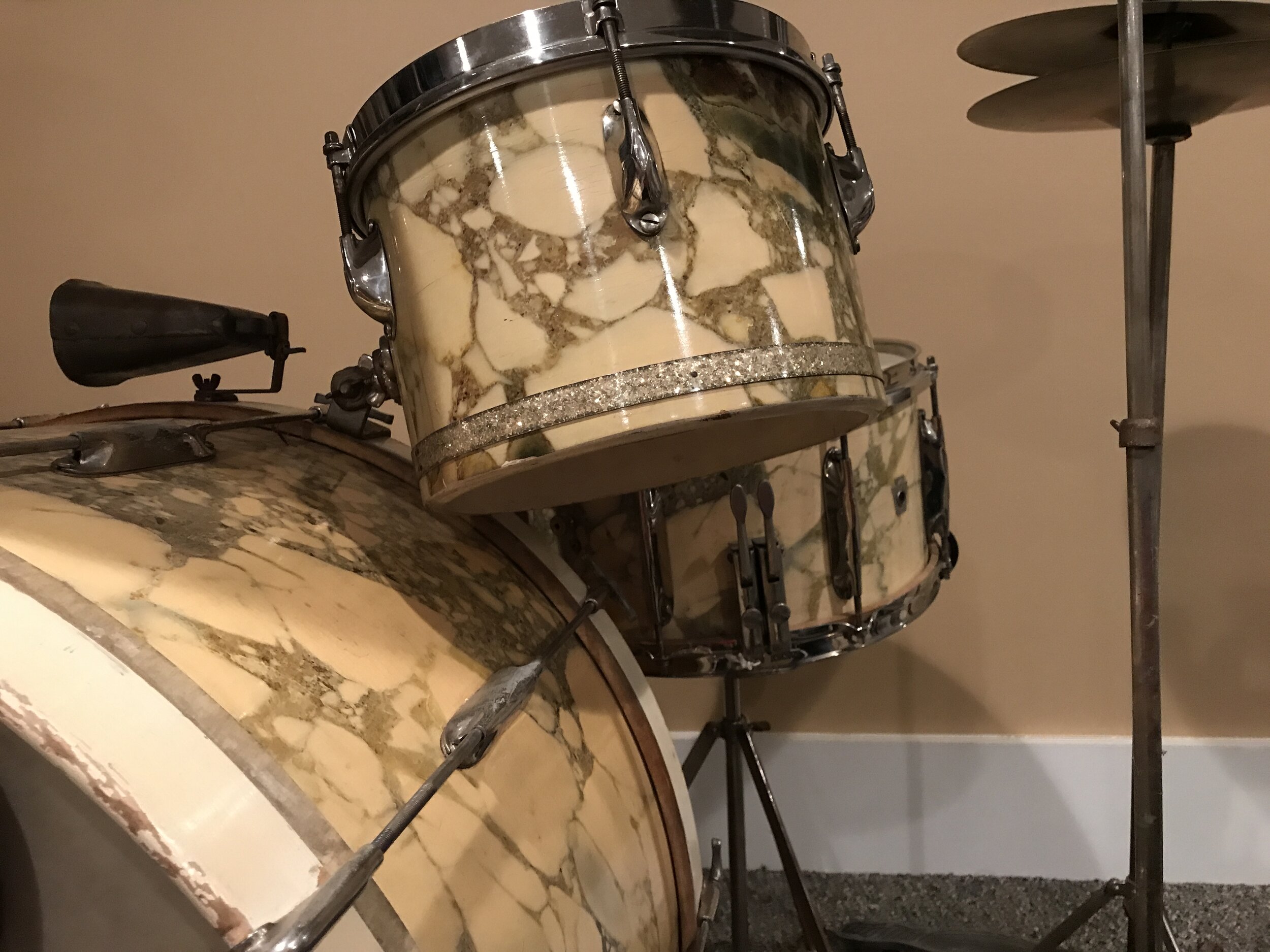The WFL drum company was founded in 1936 when William F Ludwig decided to strike out on his own again after selling the Ludwig and Ludwig drum company to Conn Selmer in 1929. The WFL Drum Company was the name William F Ludwig settled on as it was named after Conn lawyers pointed out to William F Ludwig that they owned the Ludwig name. WFL was on a very tight budget in 1936. Wm F Ludwig had to basically start all over again as funds were short. It was also a struggle to compete with the Slingerland drum company as they had a lot of the top drum stars of the day including Gene Krupa and Buddy Rich. As WFL managed to get endorsers and a foot in the market, they started to introduce other finishes to the drums. One such finish was called DeLuxe Marble and it was a short-lived finish that was painted on the shells to look like faux marble. The finish first appeared in the 1941 catalog and it lasted through WWII. Because a 10% metals law was put into effect during WWII limiting the use of metals on products, WFL was forced to design a drum made mostly of wood. That means that there were very few sets made in DeLuxe Marble that featured all-metal lugs and hardware made pre- WWII.
The set I own is rare for a number of reasons. It was made during that period just before WWII started and it is probably one of, if not the nicest example of this finish I have ever seen. I have seen a number of these sets where the finish has flaked off leaving patches where the naked wood is. The 1941 catalog offered a set known as the Capitol outfit finished in DeLuxe Marble, though other finishes could be ordered on this particular outfit. The catalog set consisted of a 14x26 bass drum, 7x10 single headed tom, 9x13 single headed tom and a 7x14 paramount snare drum all finished with nickel plated Zephyr lugs. An additional $40.00 could upgrade the set to chrome hardware and for an extra $3.00 the bass drum could be upgraded to a whopping 14x28. The Paramount snare drum was also a snare drum that featured a single snare strainer. My set was upgraded to the double strainer version which, oddly enough, was not a catalog option. The other interesting thing about my snare drum was that the original snare strainers broke at some point and a previous owner added the other style of WFL twin strainers to this drum. Because the hole patterns between the strainers are not the same, the previous owner was very clever and added a piece of wood between the added strainers and the drum shell so no extra holes would be drilled to accommodate the repair. It took about 5 years of hard looking and I managed to find the correct strainers and make the snare 100% original again. The strainers are also mounted to the left of the badge when looking straight at the drum. After collecting twin strainer snares for a number of years, it seems to be random if a snare has the strainers on the right or left side of the badge.
The bass and snare also feature aluminum WFL badges and Wm F Ludwig President can be read around the grommet. The toms feature a white painted interior which is original. They both have a strip of silver sparkle around the bottom and there are no badges on them. The bass drum is complete with original calf heads and the initials of a previous owner on the front head. There are ten center mounted zephyr lugs on the bass drum, clip-on spurs and the hoops are solid white. I added period correct hardware including a thirties era speed king bass pedal and hi-hat stand. The cymbals are also thirties era Zildjians which are small and very thin.
I played this set in a Dixieland band for a short time and they sounded fantastic with that music. The boom of the bass drum, the crack of the snare and the small light cymbals were the perfect complement to that style of music. Though a set like this is not overly practical in today’s world, it really is a very cool reminder of the times gone by. It amazes me every time I look at the finish and see the amazing condition it is in. It definitely makes me wonder how in they were able to produce it. Chalk that up to the many hundreds of questions I would love to ask Wm F Ludwig if he were still alive today.




